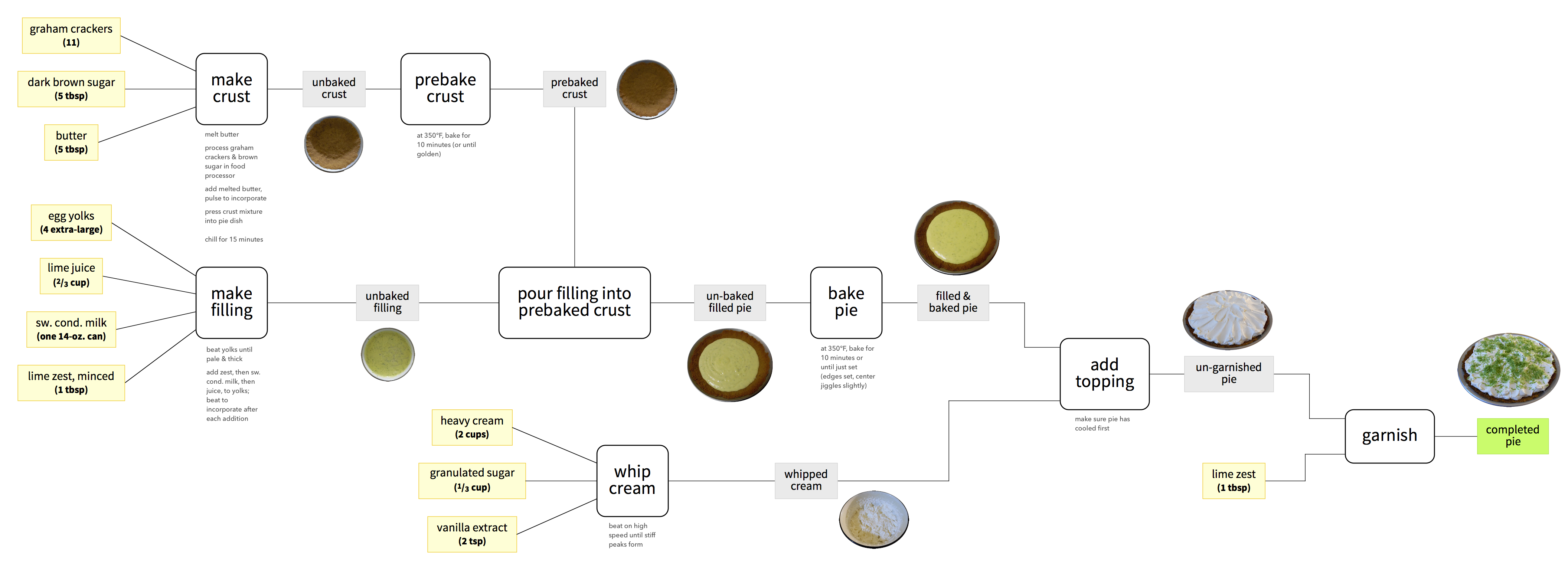In a recent comment, I approvingly cited a pair of cookbooks (Christopher Kimball’s Cook’s Bible and Dessert Bible), and said that—
For anyone who likes to cook or wants to learn, I think these two cookbooks can advance your grasp, not only of cooking, but of rationality as well.
This might’ve seemed to some folks to be a strange thing to say; what has cooking (or baking) to do with rationality (any more than any other activity)? In answer to that potential question, here’s a list of some of the rationality-related concepts that appear in this post (in addition to the central concept—the question of public epistemology—which the post is explicitly about):
- The necessity of domain knowledge (a.k.a. “expert knowledge” or “background knowledge”) for reasoning about some domain or topic
- The difficulty of converting qualitative information into quantitative information
- The indispensability of learning by doing vs. the benefit of transmissible instruction
- Chesterton’s fences, and when it is ok to knock them down
- Different types of optimality criteria
Are there others I missed?
Update: one of the readers of my blog has posted this excellent response post of his own, in which he explores the “experiment with variations” part of the SDI method I described. He writes:
My purpose here is to show you that:
- Varying a procedure will improve your skill at performing that procedure.
- Varying a procedure will teach you things about a problem domain. In fact, you’ll learn more about a problem domain if you change things around than if you repeatedly do a procedure the same way.
- Procedure variations will teach you about a problem domain even if your variations are accidental and/or detrimental.
- Even if your procedure-execution abilities are flawed, you can still oftentimes turn out a good, if suboptimal, product.
I recommend reading his post in its entirety; it’s a great case study of improving one’s procedural knowledge / skills through iteration, and showcases the engaging and rewarding qualities of cooking that I discussed in a previous comment.
Update: I’ve added an infographic to the recipe writeup, which summarizes the process in a nice visual way (inspired by this John Baez post; h/t gwern):
(TL;DR: good post OP)
I liked this post, and it seems to formalize my existing food-related intuitions reasonably well as well as suggesting useful new methods. Also, it has prompted me to subscribe to the author's blog's RSS feed.
Meta note: I wanted to cross-post the entirety of this post here, rather than just making it a link post. Unfortunately, it turned out that doing so would be a massive amount of work—I’d have to do a whole lot of manual conversion of the markup, etc.—and many features of the original post would be simply impossible to convert (the slide galleries, the click-to-enlarge-images feature, the footnotes and backreferences, the nicely-formatted table, etc.).
I would love to see LW2 (or, as I guess I should now say, simply ‘LW’) somehow solve this issue. (I have some ideas for how this might be approached, but none of them are simple, alas…) It seems to me that encouraging cross-posting is a desirable goal.
Was it a markdown post or some other formatting?
Near future we'll have deployed the markdown post editor. (I think we also have some ways to html imports but they're something we're a bit cautious about)
As Oliver said, it’s a lot more than just markup… there’s custom CSS, and even Javascript.
Is it at all possible to allow embedding of entire pages, such as via <object> tags? (In my case, I would then create a special view (toggled via a URL parameter) onto the blog post page—something my blogging software lets me do easily—that would show the content only, without the sidebar, comment section, site header, etc.; and then embed that view into the LW post.)
Isn't allowing <object> an invitation for XSS?
Also, at least for me, click-to-enlarge images and slide galleries weren't essential to enjoying your post.
Also, at least for me, click-to-enlarge images and slide galleries weren’t essential to enjoying your post.
Good to hear! :)
(However, it really is a lot of different custom stuff.)
Isn’t allowing
<object>an invitation for XSS?
Yes, that’s true, but I am not suggesting allowing <object> tags with arbitrary parameters—only specific ones (i.e., ones where the data attribute is the URL of a trusted site). Then again, I am no security expert!
With something like this, what seems like a good way to implement it is to have a “moderation queue” of some sort (akin to some blogs having a “comments must be approved to be posted” system). So a user who wants to use certain features (such as the aforesaid <object>-based embedding) would post their post, and then it would sit in the mod queue until a moderator looked at it and verified that it wasn’t malicious, that the user in question was someone they trusted not to be malicious, etc.
Anyway, I don’t insist that this solution is the best, or even good; if it can’t be made to work for security reasons, well, that’s that. If it could be made to work, though, then it (or something similar) would be very convenient!
Ah, no. The post has a bunch of custom HTML elements, such as slide galleries and tables and some special image formatting, which is indeed quite a challenge to implement.
